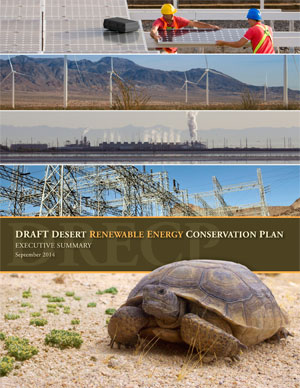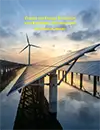LOS ANGELES — Mayor Eric Garcetti today was joined by United States Secretary of Energy Jennifer Granholm, the Los Angeles Department of Water and Power (LADWP), leading energy scientists, and local elected officials to announce the findings of the Los Angeles 100% Renewable Energy Study (LA100) — an unprecedented analysis of the City’s pathways to reaching a 100% renewable energy grid while prioritizing equity, reliability, and affordable rates for local residents.
“Los Angeles isn’t waiting for solutions to the climate crisis to show up on our doorstep — we’re forging the path to a resilient, green power grid ourselves,” said Mayor Garcetti. “This groundbreaking study will help put our City on the fast track to a 100% renewable energy future and provide a blueprint for an affordable, reliable, and sustainable system for cities around the world.”
LA100 is the result of a three year analysis by the Department of Energy’s (DOE) National Renewable Energy Laboratory (NREL). The study looked at how LADWP — a vertically integrated utility that owns its generation, transmission, and distribution system to more than four million people — can meet clean energy targets established by Mayor Garcetti.
“With help of NREL’s brilliant scientists, the LA100 study is proof that the clean energy transformation is not only possible, but preferable, for all those who want cleaner air, high-quality jobs, and cheaper utility bills,” said Secretary of Energy Jennifer M. Granholm. “DOE invites all of America’s cities and utilities to join the vanguard of this revolution, so that together we can tackle the climate crisis, create an economic renaissance, and help every community see and feel the benefits of a greener future.”
LADWP, the largest municipal utility in the country, currently generates over half of its electricity from renewable and zero-carbon resources. Using cutting-edge technology to combine dozens of economic, energy, and public health models, LA100 produced more than 100 million simulations to build on that record and identify a series of pathways that will lead the Department to 100% renewable energy. The analysis affirms that reaching a 100% renewable, reliable, and resilient grid is within Los Angeles’ grasp and will provide a wide range of health and economic benefits to Angelenos.
Each pathway included in the study follows a similar trajectory, with 73%-92% of renewable energy generation coming through wind and solar resources. This range would be enabled by the installation of additional battery storage technologies and new or upgraded transmission lines that will allow the utility to reserve and dispatch power to meet high demand periods.
To meet the remaining demand, the analysis determines that LADWP will need to bring more nascent forms of clean energy generation into the mix. It points to the infrastructure required to produce and store green hydrogen power as a leading option to bridge this gap, and leaves room for other forms of energy generation that will need to be developed in the years ahead to help store and provide clean power during periods of extremely high demand.
“Reliability of the grid is paramount — especially in a future when more consumer products like cars are electrified. Our models subjected the grid to multiple stresses — from higher temperatures due to climate change, to wildfire risks that could take out transmission lines for weeks or even months at a time,” said Dr. Jaquelin Cochran, manager of NREL’s grid systems analysis group and principal investigator of the LA100 study.
Among its other primary conclusions, the study finds that:
- Rooftop solar will play a key role in creating local clean energy, driven by the fact that utilizing such technology on single-family and multi-unit dwellings would provide sizable savings for LADWP ratepayers.
- The electrification of the transportation and building sectors offers the greatest potential for local public health benefits and reduced energy costs, with the greatest impacts seen in historically disadvantaged communities.
- Transitioning LADWP’s grid to 100% clean power could create more than 10,000 jobs each year starting in 2025.
“Through LA100, we now have several viable paths to achieve 100% renewable energy for Los Angeles while remaining true to the core principles of reliability, environmental stewardship, environmental justice, resiliency, and affordability,” said LA Board of Water and Power Commissioners President Cynthia McClain-Hill. “This is important because our charge is to reduce carbon emissions in ways that build and uplift the quality of life for everyone in Los Angeles. LA100 shows we can do that by creating jobs and opportunities and engaging our customers in being part of the solution, while building a stronger and more vibrant Los Angeles.”
LA100 was developed with an advisory group of Angelenos from diverse backgrounds, including environmental justice advocates, labor representatives, ratepayer advocates, neighborhood councils, clean energy organizations, and several of LADWP’s largest customers. The City required the analysis to prioritize environmental justice, from ensuring transparency and community input into decisions to broadening the study’s scope to analyze the impact on emissions reductions in low-income communities. The study found that these emission reductions strategies, particularly through the transportation and buildings sectors, depend on a fully decarbonized grid to realize their full health benefits.
The pathways established by the study put Los Angeles on a firm course to 100% renewable energy while serving as a blueprint for other municipalities and utilities pursuing aggressive green energy agendas to follow. Even though many of the recommendations are grounded in the realities of Los Angeles’ current renewable energy portfolio, most of the investments, methodologies, and insights offered by the study are broadly applicable to cities and electric grids worldwide.
“We commend the renewable energy experts at NREL for LA100—a study of unprecedented scale and complexity—and to the members of the LA 100 Advisory Group for their commitment to this process,” said LADWP General Manager Marty Adams. “Our power system team worked hand-in-hand with NREL and the Advisory Group for nearly four years and LADWP now has the tools and roadmap to take the next steps to keep us on track to reach 100% renewables. We are very grateful for the time, commitment, interest, experience, and perspectives that members of the advisory group brought to the table. LA100 has been an unprecedented collaboration and is only possible because of every member’s participation.”
“More than four years ago, the LADWP took up our challenge to begin developing a specific roadmap to achieving a 100% clean energy future,” said Councilmember Paul Krekorian, author of the Council’s motion initiating the study. “It is not enough to set wishful goals for reducing climate change and hope they come true — we must urgently get to work and take thoughtful, effective and workable action. Because of the extensive efforts initiated in 2016, the largest municipal utility in the United States is now poised to lead the country with a genuine plan to provide 100% carbon-free electricity to its millions of customers. As it has been in so many other things, Los Angeles will be the model that the country will follow in freeing itself from fossil fuels.”
“As severe climate breakdown rears its ugly head across the world in the form of massive wildfires, freak storm events and droughts, it is essential LA continues to lead the way with aggressive climate action,” said LA Councilmember Paul Koretz. “In December, we demolished the Navajo Generating Station Coal Plant, and in January, we hired our Climate Emergency Mobilization Director in order to center our climate action in environmental justice. Today’s announcement completes our climate hat trick. And we are just getting warmed up.”
“I am proud to support the LA100 study and the opportunity that it represents to chart the best path forward for a sustainable energy future for the well-being of our city,” said 10th District Councilmember Mark Ridley-Thomas. “When we talk about our energy future we must ensure that communities – particularly those most vulnerable to environmental health impacts – are involved so that equity is deeply embedded in our next steps forward.”
“Getting to 100% clean energy as soon as possible is not a goal; it is an imperative,” said Councilmember Mike Bonin, who partnered with environmental groups and co-sponsored the motion initiating the study. “We need aggressive action to force an urgent and just transition to a fossil-free tomorrow. It is how we safeguard our children’s future. It is how we preserve a livable Los Angeles. It is how we protect our neighborhoods and ensure equity.”
“While I worked to enact SB 100 to put California on a path to 100% clean energy by 2045, this study spearheaded by Mayor Garcetti places LA on a trajectory to meet this timeline, if not sooner, and exemplify to the rest of the nation how it can be done,” said Councilmember Kevin De León. “The findings of this comprehensive study highlight the critical importance of emissions reductions in low-income communities, particularly resulting from the growth of electric vehicles. This is essential if we’re to achieve environmental justice for communities, like mine, that for too long have had to bear a disproportionate exposure to environmental pollutants and carcinogens.”
To view the LA100 video, click here. To learn more about the LA100 study, visit NREL’s website here.


